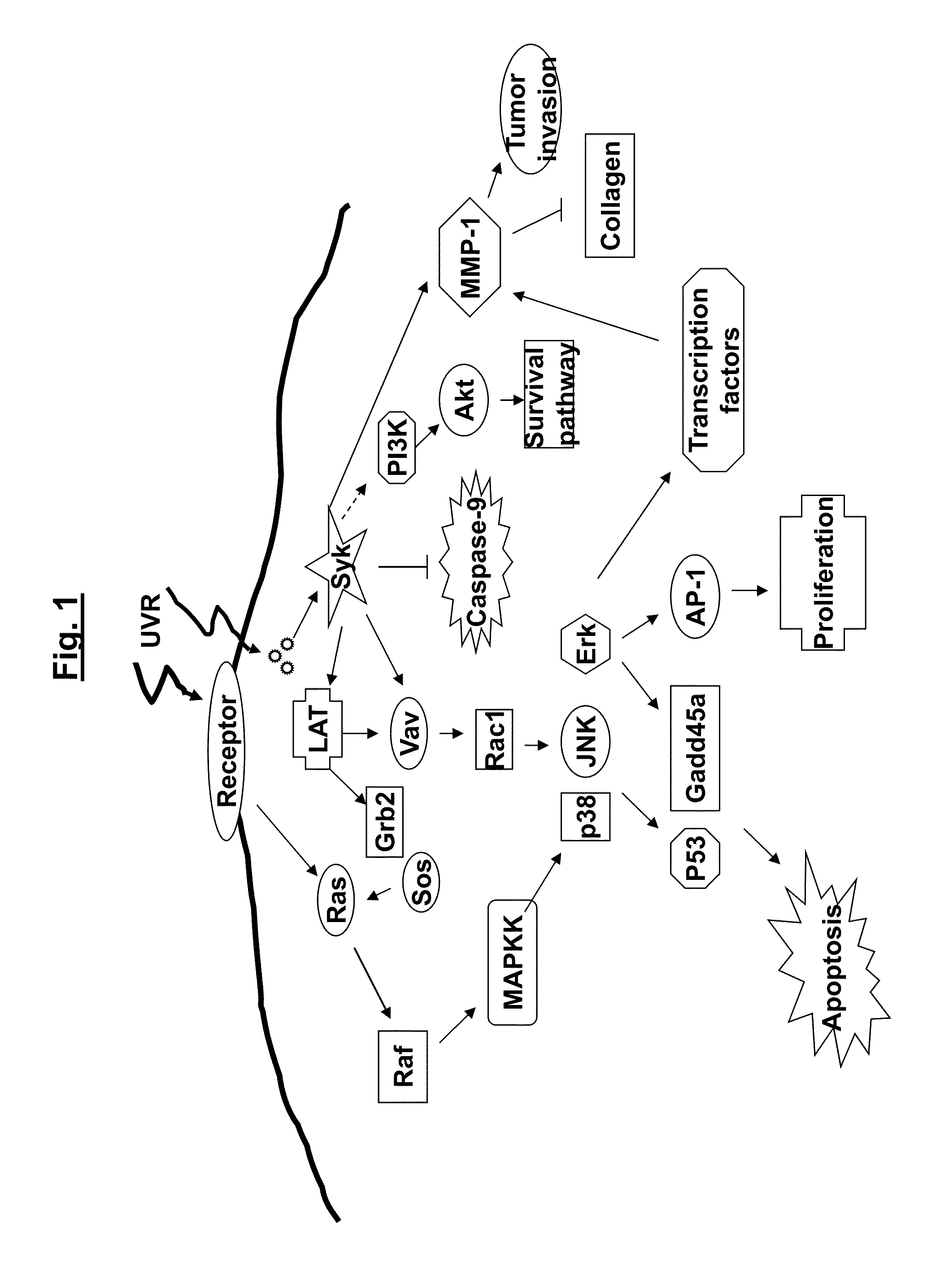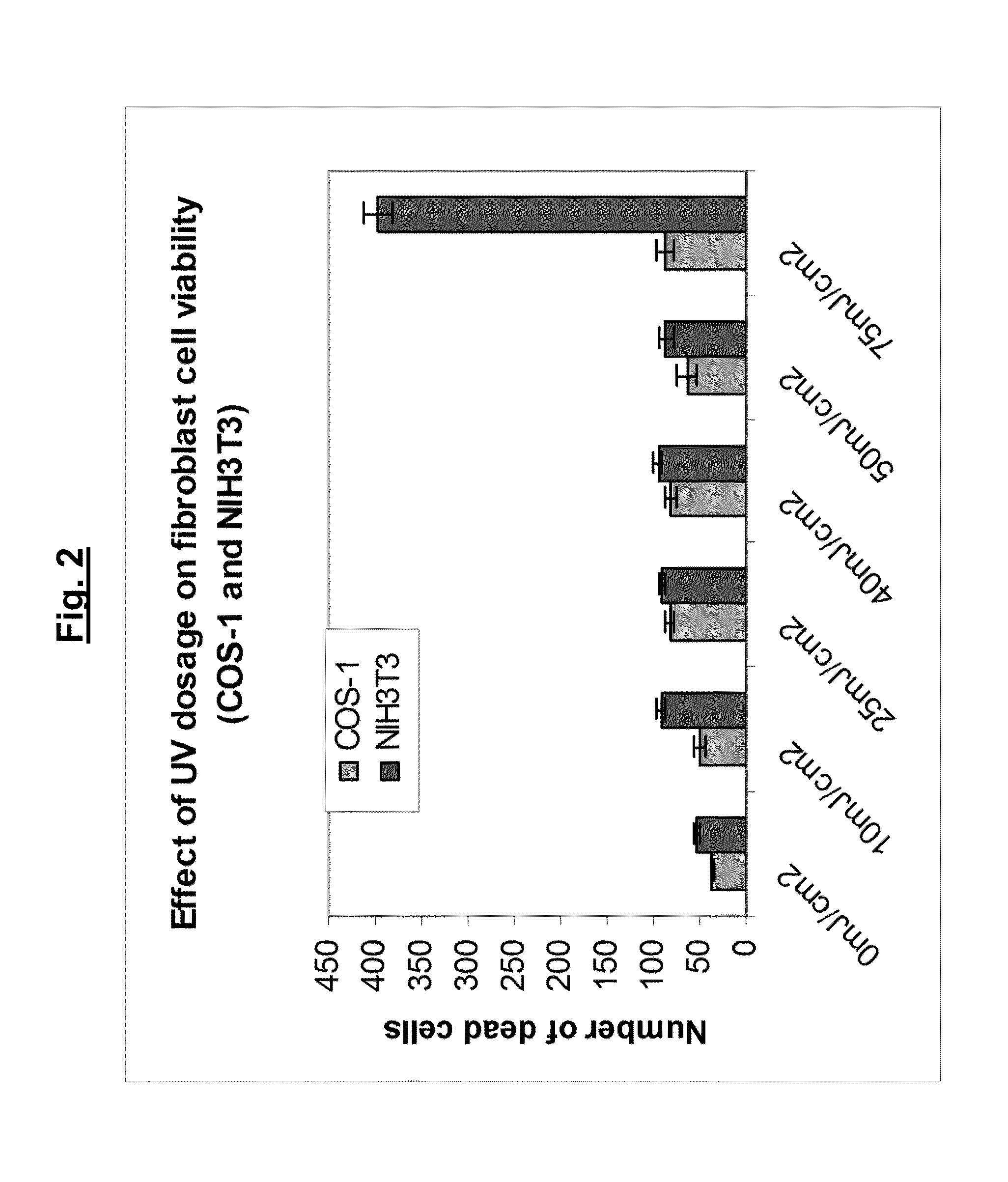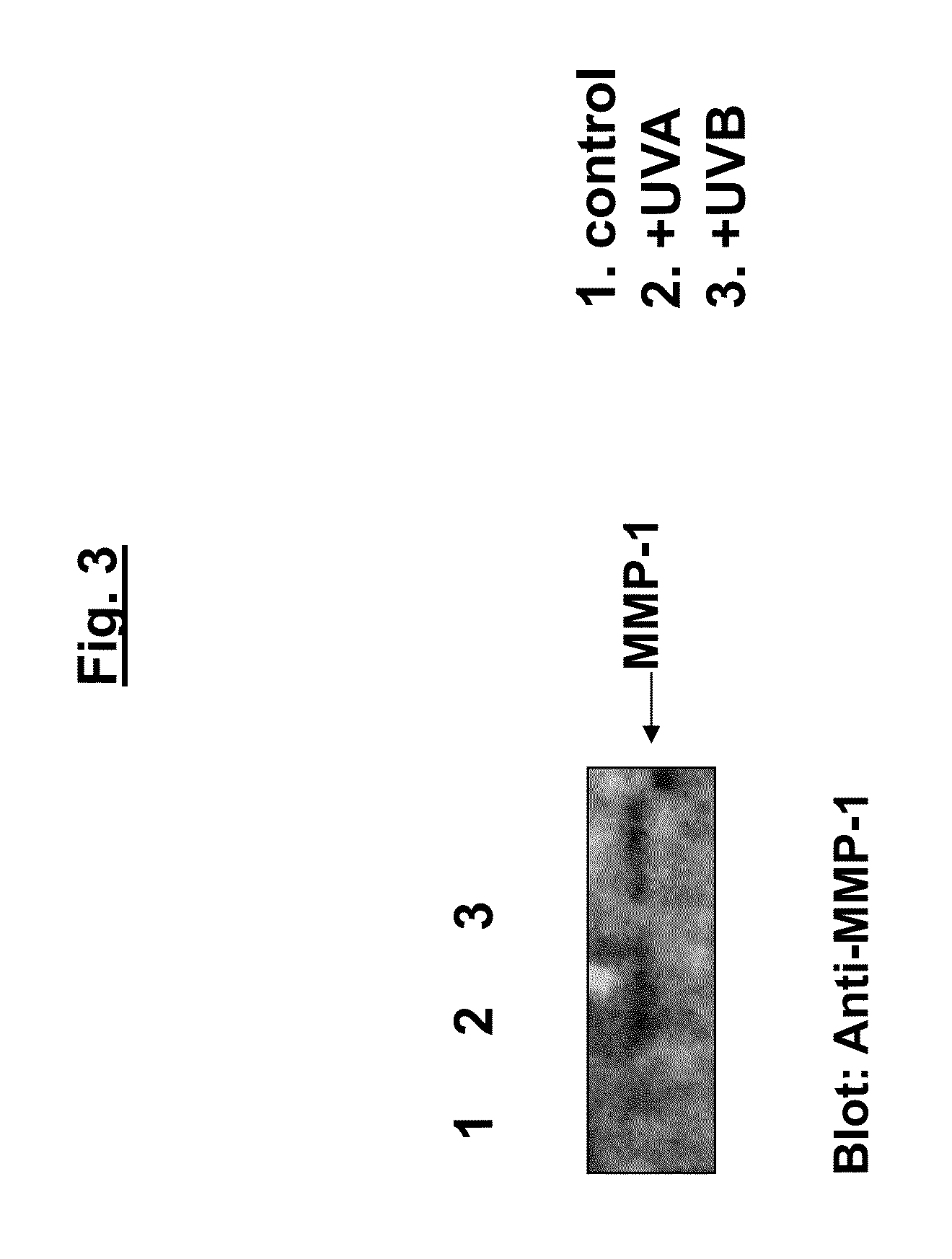New Signaling Molecule Involved in Ultraviolet Damage to Skin
a signaling molecule and ultraviolet damage technology, applied in the field of new signaling molecule involved in ultraviolet damage to skin, can solve the problems of single strand breakage, dna crosslinking, base pair loss, etc., and achieve the effect of reducing the level of syk kinas
- Summary
- Abstract
- Description
- Claims
- Application Information
AI Technical Summary
Benefits of technology
Problems solved by technology
Method used
Image
Examples
experimental example 1
Determination of UVA / UVB Dosage for Fibroblast Cells
[0346]Mouse fibroblast cells NIH3T3 (CRL-1658, ATCC) and Monkey kidney fibroblast cells COS-1 (CRL-1650, ATCC) were seeded into 4 cm tissue culture dishes in provided DMEM medium one day prior to UVR treatment. The cells were exposed to different dosages of UVR, provided by a Solar Stimulator (Abbott Laboratories, North Chicago, Ill.). The UVR dosages tested in these experiments were: 10 mJ / cm2, 25 mJ / cm2, 40 mJ / cm2, 50 mJ / cm2, and 75 mJ / cm2 (FIG. 2).
[0347]Fibroblast cell viability was evaluated 24 hours after UVR treatment using the trypan blue cell death assay. The data indicated that cell viability was significantly attenuated when the UVR dosage was increased from 50 mJ / cm2 to 75 mJ / cm2. Based on these data, a dosage of 60 mJ / cm2 for the UV radiation was selected for further study using Western blot assay analysis.
experimental example 2
Effects of UVA / UVB on the Expression of MMP-1 in Human Fibroblast
[0348]Human fibroblast cells (AG04058, Coriell) were grown in MEM completed medium. The fibroblast cells were plated into 4 cm tissue culture dishes the day before the assay. The fibroblast cells were treated with UVA or UVB at a dosage of 60 mJ / cm2 using a Stratalinker UV Crosslinker (Stratagene, La Jolla, Calif.). The supernatants from the cultures were collected at 6 hours and 24 hours after UV treatment. Cell viability was evaluated by trypan blue assay and found to be >95% at every indicated UV radiation dosage.
[0349]For the western blot, equal amounts of proteins were mixed with 2× sample buffer, boiled for 5 minutes, and chilled on ice. The samples were subjected to 4%-15% SDS-PAGE, and electrophoretically transferred to a nitrocellulose membrane. The membrane was blocked with 5% dry milk in washing buffer.
[0350]MMP-1 protein was detected with anti-MMP-1 antibody (Calbiochem). The result was visualized using the...
experimental example 3
Identification of Kinases Which Activity is Important for UV Induced Skin Damage
[0351]Human fibroblast cells (AG04058) were seeded into 24-well tissue culture dishes with MEM medium one day before the assay. Specific inhibitors for each kinase were added into each different well as indicated (FIG. 4). The supernatants were collected at 24 hours after UV treatment.
[0352]Protein samples from the cell supernatants were evaluated by western blot assay. The band of MMP-1 was observed in each treatment condition except in the presence of Syk kinase inhibitor. These data suggested that suppressing Syk with specific inhibitors suppressed MMP-1 expression (FIG. 4).
PUM
| Property | Measurement | Unit |
|---|---|---|
| concentrations | aaaaa | aaaaa |
| concentrations | aaaaa | aaaaa |
| concentrations | aaaaa | aaaaa |
Abstract
Description
Claims
Application Information
 Login to View More
Login to View More - R&D
- Intellectual Property
- Life Sciences
- Materials
- Tech Scout
- Unparalleled Data Quality
- Higher Quality Content
- 60% Fewer Hallucinations
Browse by: Latest US Patents, China's latest patents, Technical Efficacy Thesaurus, Application Domain, Technology Topic, Popular Technical Reports.
© 2025 PatSnap. All rights reserved.Legal|Privacy policy|Modern Slavery Act Transparency Statement|Sitemap|About US| Contact US: help@patsnap.com



